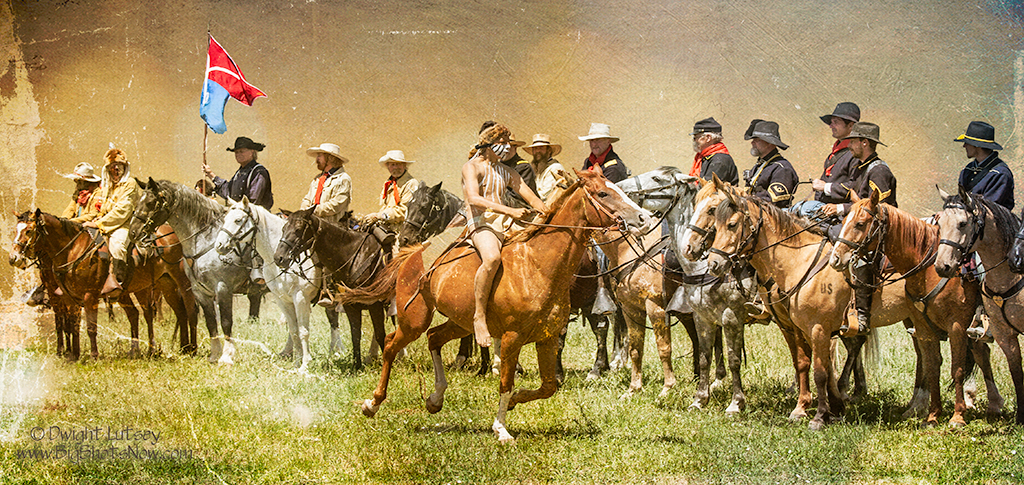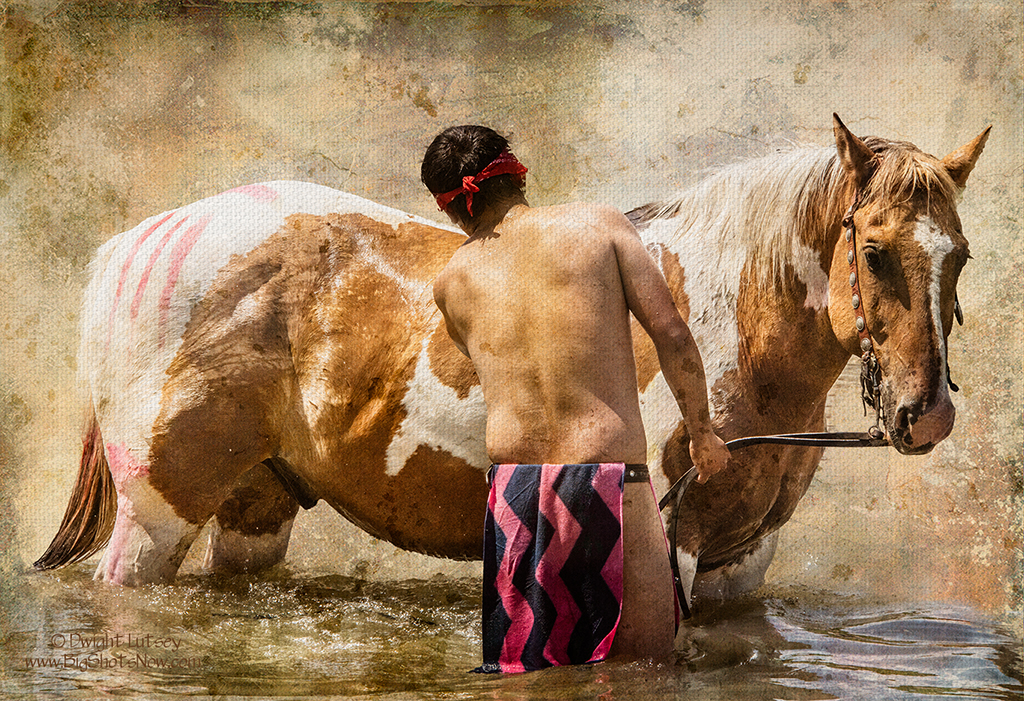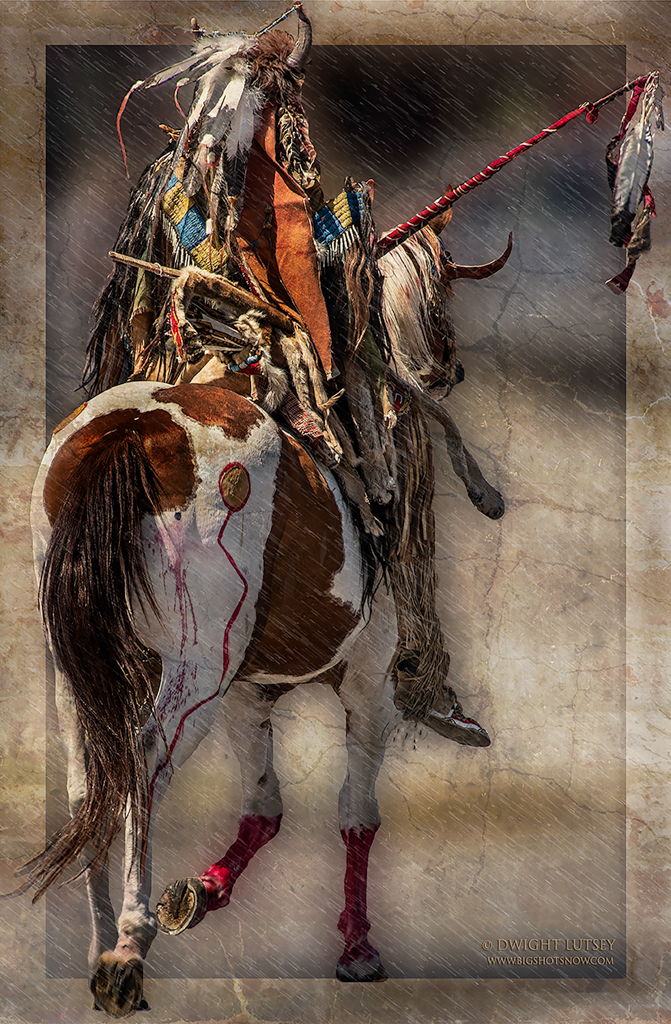
The parade of the troopers showed their massed formation with each cavalry member dressed in their best uniforms, and carrying their newest weapons and using their military bearing to its best advantage. They wanted to appear to be invincible to the tribes who didn’t utilize this type of concentrated warfare.
There were times before the situation between the tribes and the whites became too adversarial that the two soon to be warring parties had contact. When this happened it was an occasion for them to impress each other with their strength and abilities, and especially their power.
The Indians on the other hand fought a more individual style of warfare with warriors banding together in large or small groups, but with each individual having his own style of riding and fighting, and they used their body paint as both a protection and a warning to all seeing them how powerful they were. Taunting their enemies with war cries and declarations of their strength and bravery were common even if they didn’t understand each other’s language.
The rider above is showing his prowess by his horsemanship and daring with his riding skill while calling out his challenge to the troopers watching him. “Do you see me? I am not afraid of your bullets. I welcome meeting you in Battle”. There was no fighting this day but it wasn’t long before each side would test their style of combat for better or worse.



You must be logged in to post a comment.